Jurkovič's Buildings
Maměnka and Libušín by Dušan Jurkovič
Pustevny are undoubtedly inseparably linked to the name of Slovak architect Dušan Jurkovič (August 23, 1868 – December 21, 1947). Dušan Samo (Samuel) Jurkovič was a prominent representative of Art Nouveau architecture. He created a highly distinctive style, significantly influenced by folk architecture. He also drew inspiration from the English Arts and Crafts movement.
Tip for an Outing
HOW TO GET TO RADHOŠŤ
For a family outing, we recommend accessing Radhošť from Pustevny, which is reachable by cable car from Trojanovice. From there, a blue-marked ridge trail leads westward over the summit of Radegast and past the statue of Radegast to the top (4 km). Conversely, the most rewarding ascent is from Rožnov pod Radhoštěm via the red tourist trail (7 km with an elevation gain of about 800 m).
Construction
Dušan Jurkovič began working on the architectural design of Libušín and the neighboring Maměnka in 1897 at the commission of the Pohorská jednota Radhošť. Both of these lodges (known as huts), built in the style of so-called folk Art Nouveau with Wallachian elements, were officially opened on August 6, 1899.
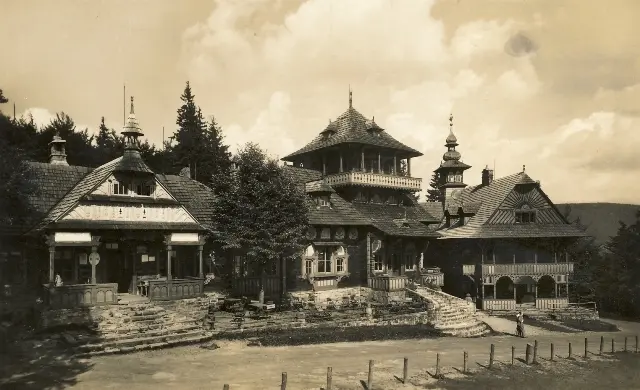
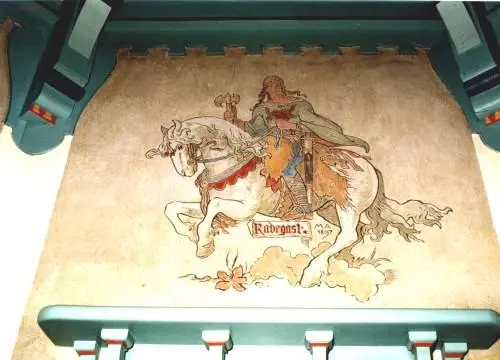
Decoration
The decoration of Libušín involved the painter Mikoláš Aleš. He is the author of the drawings of the god Radegast, the portrait of Stavinoha, and two robbers, which served as the basis for the interior paintings by academic painter Karel Štapfer.
Dušan Samo Jurkovič
August 23, 1868, Turá Lúka – December 21, 1947, Bratislava
The roots of Jurkovič’s focus on working with folk forms can be traced back to his family background; his father was among the well-known Slovak patriots, and his mother was knowledgeable about folk art. After studying at a lower gymnasium in Sopron, he went to Vienna, where he studied at the State Industrial School from 1884 to 1889, which was then headed by Camillo Sitte.
During a brief internship in the studio of architect Bully in Martin, he became fascinated by the work of folk carpenters. He worked for six years in the studio of architect Michal Urbánek in Vsetín. With his partial assistance, he realized constructions for the Ethnographic Exhibition in Vsetín and the Czechoslovak Ethnographic Exhibition in Prague in 1895. The recognition of his work led to the commission for the construction of the group of recreational lodges Libušín and Maměnka at Pustevny (1897–1899).
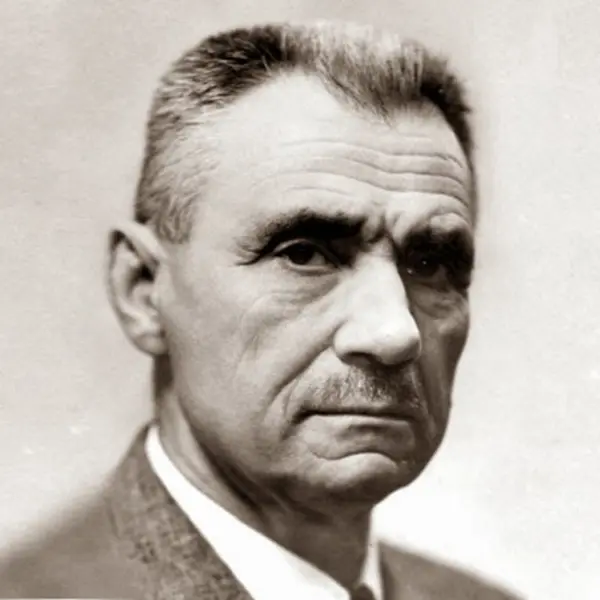
Post-war Condition
At the end of World War II, the lodges were devastated, as they were used to accommodate Hungarian assistance units and the Hitler Youth. During that time, Libušín and Maměnka fell into such disrepair that there were considerations for their demolition after the war.
They were preserved thanks in part to the advocacy of their creator, architect Jurkovič, who, at nearly eighty years old, personally visited Pustevny in 1947. He also expressed that he would not design such buildings in the same way today, as they were not sufficiently durable for the local climatic conditions. The oldest lodges were gradually falling into a state of disrepair, so over time, only the Tanečnica Hotel and the nearby Radegast Hotel remained fully operational at Pustevny.
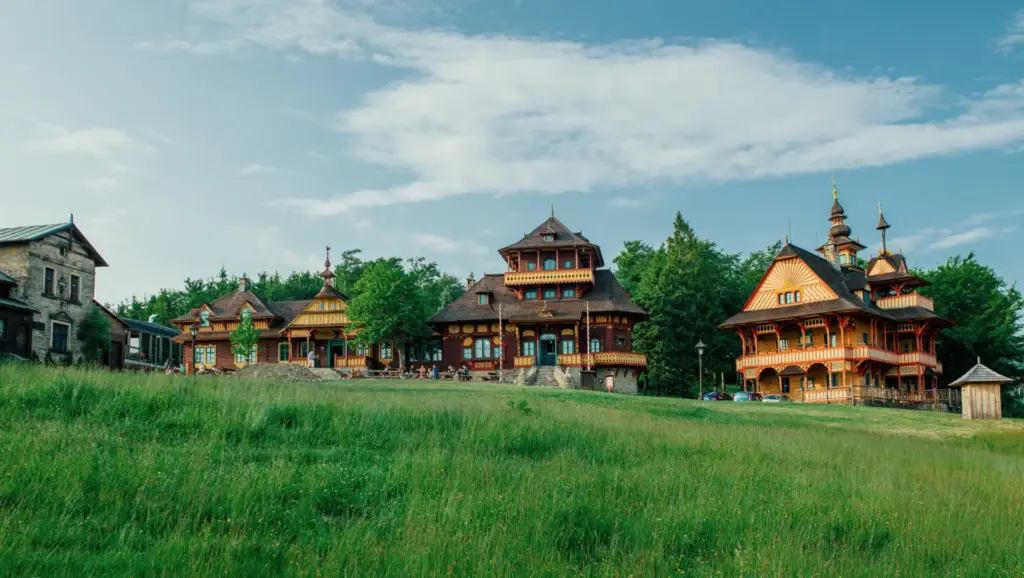
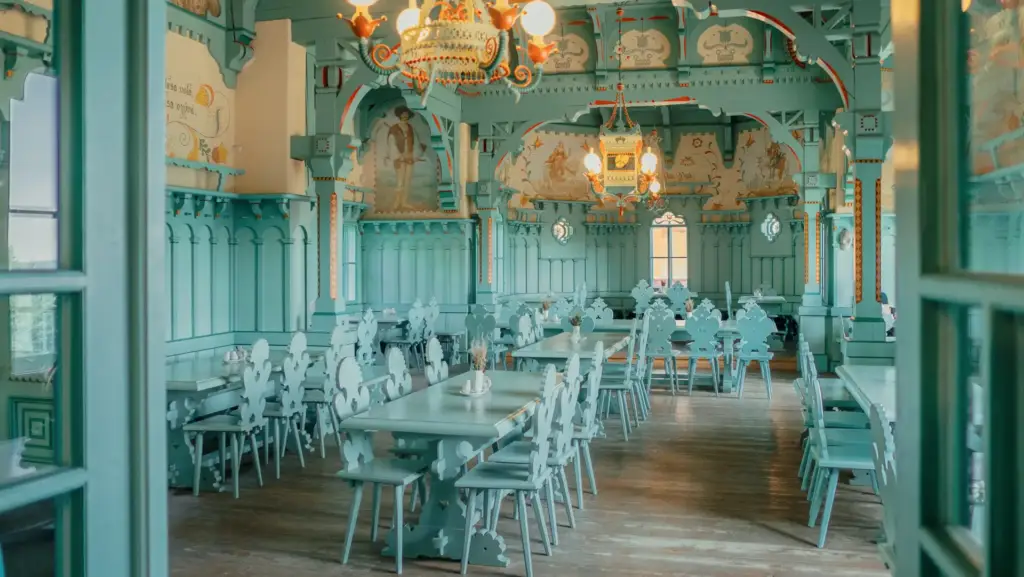
Reconstruction
In 1950, the Pohorská jednota Radhošť was dissolved, and the buildings became state property. The idea for a major reconstruction of the Pustevny lodges came from the Wallachian Open Air Museum in the 1980s. However, it was not until 1995 that the project could be realized. After four years, in 1999, the Libušín restaurant was ceremoniously reopened, and in 2003, the Maměnka hotel was also made accessible. During the reconstruction, the Pustevny area was declared a National Cultural Monument. Both buildings are currently managed by the Wallachian Open Air Museum.
Libušín
On March 3, 2014, Libušín was significantly damaged by a fire that primarily destroyed its right section, which housed the most artistically valuable dining room.
The cause of the fire at the end of winter 2014 was poorly repaired stoves. During the heating system repair in 2008, an air pocket was created in the chimney system that was not insulated from the wooden walls and beams. The defect was not detected even by the technicians during the inspection.
Work on the restoration of Libušín has been ongoing since 2016 and is expected to continue until mid-2019.
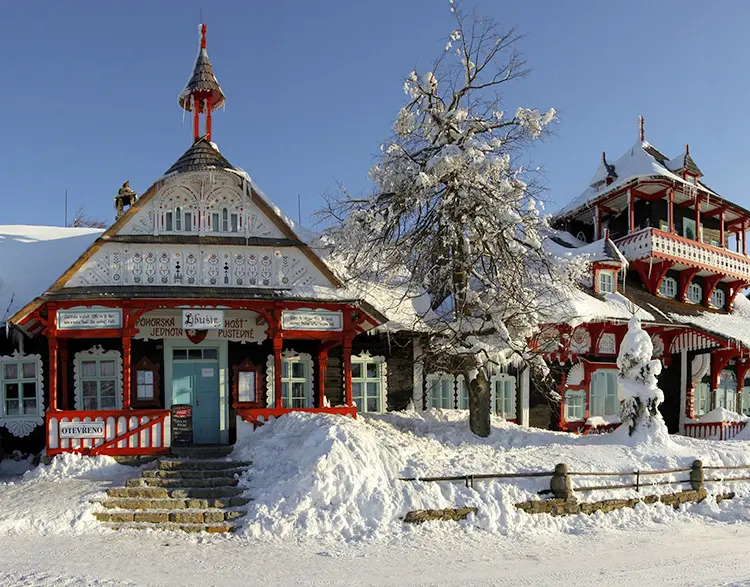
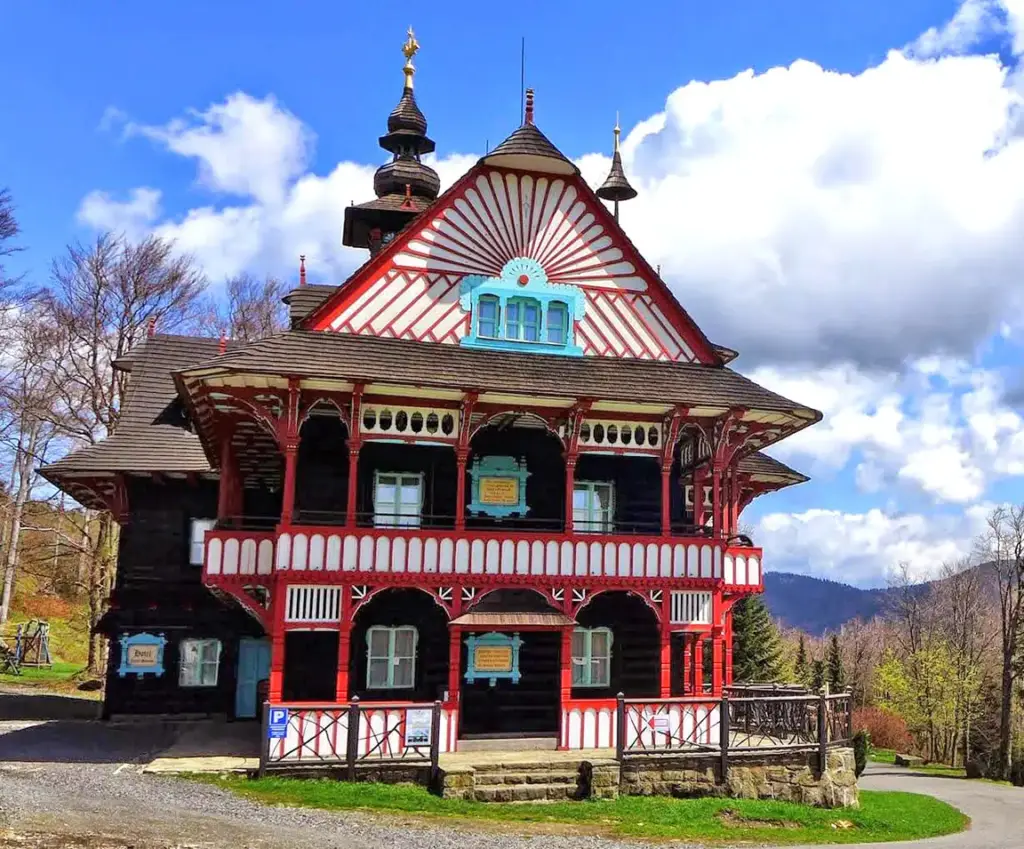
Maměnka
The Maměnka Hotel is accessible year-round to all visitors of Pustevny.
In mid-October 2017, dismantling work began on the reconstruction of the boiler room at the Maměnka building in Pustevny. The project’s aim is to stabilize the structural and moisture conditions of the boiler room, which is partially embedded in the slope. The masonry restoration in the boiler room will eliminate the effects of soil moisture and limit the infiltration of rainwater.


